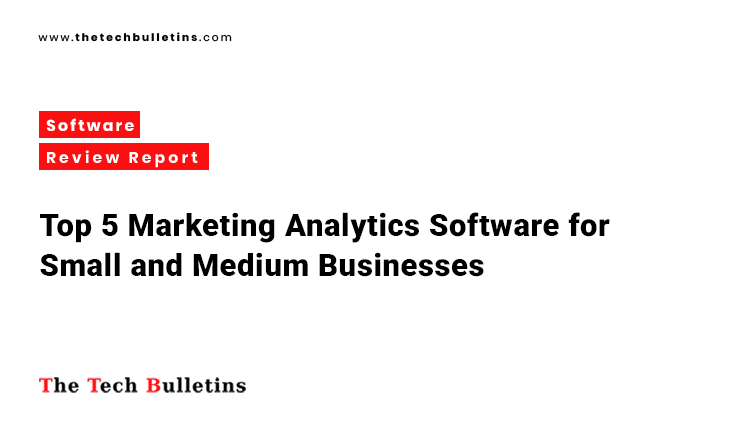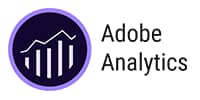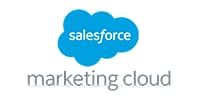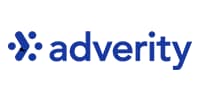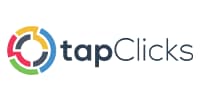Introduction
In today’s data-driven business climate, enterprises invest heavily in marketing campaigns across channels — digital ads, content, email, social media, events, and more. But raw campaign output is meaningless unless you can measure, analyze, and optimize performance. That’s where marketing analytics software becomes indispensable: it consolidates cross-channel data, surfaces actionable insights, and helps marketing leaders allocate budget more intelligently.
However, with dozens of marketing analytics platforms on the market, choosing the “right” one for an enterprise is far from trivial. You must balance user experience, deep analytics capabilities, integration maturity, scalability for large volumes of data, and cost. This review examines five top contenders aimed at enterprises and compares them across key evaluation criteria to help decision-makers pick what fits best.
Methodology
To compare and rank the marketing analytics software, we used a consistent evaluation framework. Each product is assessed on:
- Ease of Use – How intuitive the interface is, how steep the learning curve, how fast users can onboard.
- Core Features – The analytics, attribution, segmentation, reporting, predictive modeling, etc.
- Integration Capabilities – The ability to ingest data from multiple sources (ad platforms, CRMs, data warehouses, offline systems).
- Scalability – Handling large data volumes, concurrent users, multi-market, and enterprise growth.
- Pricing – Licensing model (free/tiers/custom/enterprise), transparency, cost per volume.
- Customer Feedback – Average ratings on review platforms, primary pros & cons from users, and a representative quote.
We focus on tools that position themselves for large or enterprise businesses, not lightweight or niche solutions. In coming sections, “Benchmark Performance” gives bullet-point assessments for ease of use, integration, visualization, and scalability.
Top 5 Marketing Analytics Software for Enterprises
Here are five leading marketing analytics platforms suitable for enterprise use, and how they stack up:
1. Adobe Analytics (part of Adobe Experience Cloud)
Overview: Adobe Analytics is a flagship web and digital analytics platform, often bundled within the Adobe Experience Cloud suite. It is ideal for enterprises with omni-channel digital presence, deep analytic needs, and existing Adobe ecosystem investments. It excels when you need granular segmentation, real-time insights, and convergence with Adobe’s marketing stack.
Key Features
- Advanced segmentation and cohort analysis
- Real-time data & anomaly detection
- Custom metrics and calculated fields
- API & Adobe Experience Platform integration
- Predictive analytics and attribution modeling
Benchmark Performance
- Ease of Use: Moderate — powerful features but steep learning curve
- Data Integration: Excellent — rich APIs and connectors
- Visualization: Strong — customizable dashboards, visual widgets
- Scalability: Outstanding — built to handle large volumes and enterprise usage
Pricing
- Free Plan: No
- Starter / Professional: Usually via custom licensing
- Enterprise: Yes (custom quotes)
- Free Trial: Rarely publicly offered (mostly demo)
Customer Reviews
- Average rating: ~4.1 / 5 on G2
- Pros: Very granular analytics, powerful customization, deep integration with Adobe stack
- Cons: High cost, steep learning curve, complexity for non-technical users
- Customer quote: “It has every advanced feature you want — drag-and-drop dashboards, real-time insights — but the setup and training demand significant investment.”
2. Salesforce Marketing Cloud Intelligence (formerly Datorama)
Overview: Salesforce Marketing Cloud Intelligence, formerly known as Datorama, is a marketing intelligence & analytics platform explicitly built for enterprise marketers. Because it’s part of the Salesforce ecosystem, it is suited for organizations already invested in Salesforce’s marketing or CRM tools. It’s used for cross-channel aggregation, journey insights, and ROI optimization.
Key Features
- Multichannel data ingestion and normalization
- Marketing spend forecasting & budgeting features
- Unified dashboards and alerts
- AI-driven KPI suggestions
- White label capabilities for agencies
Benchmark Performance
- Ease of Use: Good — intuitively designed for marketing teams
- Data Integration: Excellent — supports numerous connectors and APIs
- Visualization: Strong — flexible dashboards and widgeting
- Scalability: High — built for enterprise scale
Pricing
- Free Plan: No
- Starter / Professional: Possibly via smaller tiers (custom)
- Enterprise: Yes (custom pricing)
- Free Trial: Usually a demo rather than full trial
Customer Reviews
- Average rating: Generally highly rated among enterprise marketers
- Pros: Strong integration, marketing consolidation, automation
- Cons: Complexity in configuration, relatively high cost
- Customer quote: “It is one of the best marketing analytics platforms — easy to use, powerful dashboards, though setup takes planning.”
3. Adverity
Overview: Adverity is a marketing data operations and analytics platform that emphasizes clean data pipelines, transformations, and analytics flexibility. It’s targeted at enterprises and agencies that require robust data infrastructure and want to bring data from many sources into one environment for deep analysis.
Key Features
- Automated data pipelines & ETL
- Data quality monitoring & cleansing
- Flexible transformations and mapping
- Centralized analytics and dashboards
- Bring-your-own storage / warehouse integration
Benchmark Performance
- Ease of Use: Moderate — requires configuration but visual flow tooling helps
- Data Integration: Excellent — supports many connectors and custom sources
- Visualization: Good — solid dashboarding, though less flashy than specialized front ends
- Scalability: High — built for large datasets and complex transformations
Pricing
- Free Plan: No
- Starter / Professional: Tiered pricing based on data volume
- Enterprise: Yes (for high volume and features)
- Free Trial: Often available (depending on vendor)
Customer Reviews
- Average rating: Well regarded among data-centric marketers
- Pros: Strong data operations backbone, transparency, flexibility
- Cons: UI learning curve, sometimes slower dashboard refresh for complex transforms
- Customer quote: “Adverity gives us control over data pipelines and lets us bring everything into one place for deep insight across campaigns.”
4. Whatagraph (Enterprise edition)
Overview: Whatagraph is a reporting and analytics platform built for marketing teams to centralize reporting across channels. While it is widely used by agencies and SMBs, its enterprise edition includes advanced features tailored for large organizations. It is best for enterprises needing visually compelling, automated reporting and cross-channel consolidation.
Key Features
- Automated cross-channel performance reports
- White-label reporting and client dashboards
- Template library for common marketing needs
- Scheduled exports and alerts
- API access for custom data flows
Benchmark Performance
- Ease of Use: High — user-friendly reporting interface
- Data Integration: Good — many connectors but fewer for highly custom sources
- Visualization: Excellent — polished, presentation-ready dashboards
- Scalability: Moderate to High — suitable for many users, but performance at very high data volumes depends on backend
Pricing
- Free Plan: Limited free version for small users
- Starter / Professional: Available tiers for smaller usage
- Enterprise: Custom pricing with advanced features
- Free Trial: Yes
Customer Reviews
- Average rating: Positive reviews, particularly for design and automation
- Pros: Ease of use, quick setup, polished visuals
- Cons: Less depth in advanced analytics, sometimes limited custom connector support
- Customer quote: “We replaced a dozen static reports with Whatagraph’s dashboards — our stakeholders love the visuals and automation.”
5. TapClicks (Analytics & Reporting)
Overview: TapClicks is a unified reporting and analytics platform built for enterprises and agencies. It combines data aggregation, ETL, and dashboarding capabilities. It is particularly useful when you need a single view across marketing channels, clients, or global markets and want strong white-label capabilities.
Key Features
- Marketing data aggregation & ETL
- Custom dashboards & reporting modules
- White-label and multi-client management
- Alerts, pacing, and anomaly detection
- API and webhook support
Benchmark Performance
- Ease of Use: Good — designed to be managed by marketing operations teams
- Data Integration: Strong — many connectors and flexible mapping
- Visualization: Good — solid dashboarding and ad hoc reporting
- Scalability: High — built to serve agencies and large enterprises
Pricing
- Free Plan: No
- Starter / Professional: Tiered pricing for smaller clients
- Enterprise: Yes (custom)
- Free Trial: Yes (often a demo or limited trial)
Customer Reviews
- Average rating: Favorable among users needing multi-client reporting
- Pros: Integrated data pipeline + reporting, white label, multi-client support
- Cons: Some users report occasional latency or dashboard lag, learning time for advanced features
- Customer quote: “TapClicks gave us a unified view across all our campaigns globally — it’s been a game changer in simplifying our analytics stack.”
Comparative Analysis Table
| Software | Ease of Use | Data Integration | Visualization | Scalability | Starting Price* |
|---|---|---|---|---|---|
| Adobe Analytics | Moderate | Excellent | Strong | Outstanding | Custom enterprise pricing |
| Salesforce Marketing Cloud Intelligence | Good | Excellent | Strong | High | Custom enterprise pricing |
| Adverity | Moderate | Excellent | Good | High | Tier based (custom) |
| Whatagraph | High | Good | Excellent | Moderate-High | Entry tier available |
| TapClicks | Good | Strong | Good | High | Tier based (custom) |
* “Starting Price” refers to the base accessible tier or entry point; in enterprise licensing models, final cost depends on volume, features, and negotiation.
Recommendations for Enterprises
- Budget-Conscious Enterprises: Whatagraph’s accessible visuals and reporting focus make it a strong option if your analytic needs are not hyper-complex but you require cross-channel dashboards.
- Sales / CRM-Integrated Enterprises: If your firm already runs on Salesforce or Salesforce Marketing Cloud, Salesforce Marketing Cloud Intelligence offers tight alignment and lower friction in integration.
- Data Engineering-Heavy Organizations: Enterprises with large data operations or multiple custom sources should lean toward Adverity — its pipeline, ETL, and data hygiene features give you more control.
- Enterprises with Deep Adobe Ecosystem: If your enterprise already relies on Adobe’s tools (Target, Experience Manager, Audience Manager), Adobe Analytics provides the deepest synergy and advanced modeling capabilities.
- Reporting & Multi-Client Environments: If your enterprise supports multiple business units, regions, or clients, TapClicks offers excellent multi-client reporting, white labeling, and scalability for cross-region consolidation.
In many real-world deployments, enterprises adopt a hybrid model: use a backbone analytics engine like Adobe or Adverity, and layer reporting tools (e.g., Whatagraph or TapClicks) for stakeholder-friendly dashboards.
Conclusion
There is no “one best” marketing analytics software for all enterprises — the right choice depends on your existing tech stack, data complexity, reporting needs, and budget. From our review:
- Adobe Analytics remains a gold standard for deep analytics and synergy within Adobe’s ecosystem, though it demands investment and training.
- Salesforce Marketing Cloud Intelligence is compelling if you already live in the Salesforce world and need solid cross-channel analytics.
- Adverity stands out where data pipeline control, transformations, and enterprise data infrastructure matter.
- Whatagraph offers excellent usability and polished reporting, ideal when visualization and speed matter more than extreme depth.
- TapClicks is ideal for enterprises with multiple units, client reporting, or white-label needs.
For many enterprises, combining a strong analytics engine with a visualization/reporting layer yields optimal flexibility. Ultimately, your decision should start with a proof of concept (POC) aligned with your highest priority use cases, and ensure the vendor is capable of scaling with you.
References
- G2 reviews (user ratings and pros/cons)
- Vendor websites / product documentation
- Industry reports and comparisons (e.g. vendor review sites, analyst briefings)








